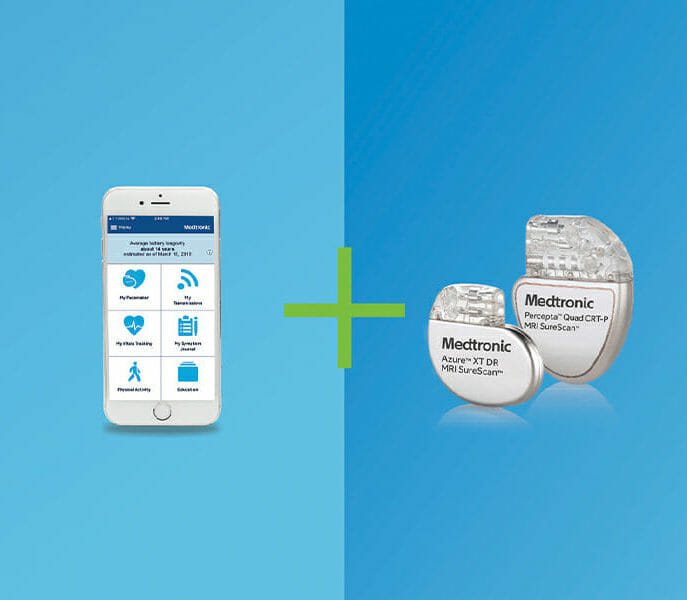Not too long ago, device marketers, alongside the hospital and physician groups who comprise their client base, spent actual time in each other’s physical presence. They jostled their way through trade show lobbies, shot the breeze in exhibit halls and clinked glasses during dinners and other social functions.
COVID-19 changed all that, and perhaps for good. When the pandemic thwarted the industry’s ability to conduct in-person business, manufacturers and marketers started to scramble to recalibrate their messaging and their means of delivering it. With most budgets set for 2021, device manufacturers are investing in digital outreach, content marketing, marketing automation and other technology channels that support the industry’s evolving commercial models.
Nobody’s all that happy about it. “COVID has our customers over a barrel,” says Tom Dudnyk, president of device specialist Vivo Agency. “They’ve lost access to targets at hospitals, practices and trade shows. And I don’t think these will bounce back anytime soon.”
Even prior to the pandemic, some hospitals and health systems offered limited access to company representatives in clinical environments. But when the COVID-era restrictions on admittance kicked in, device marketers pivoted to digital outreach.
“We saw a pretty significant shift from investing in sales/promotional types of strategies toward more digital, B2B account-based marketing campaigns,” explains Brado CEO Andy Parham. “We don’t think that change will go away.”
Industry giants, for their part, are preaching flexibility. Medtronic is taking a “ready for anything” approach to its marketing plans, according to Jaime LaMontagne, VP of global marketing strategy for Medtronic Cardiac Rhythm Management. “We are shifting to virtual, online and digital tactics, but also planning for shifts back to face-to-face, which gives us the flexibility to be ready to market to our customers as the market shifts,” she notes.
Like many other device makers, Medtronic has evolved its customer approach amid the pandemic. LaMontagne stresses the importance of adaptability in an uncertain climate: “We know that many others are also pivoting to online customer campaigns, which are flooding inboxes and social media platforms. So we are complementing this with focused one-to-one virtual conversations to remain as attuned to our customer needs as possible.”
Right now, device marketers are focused on making sure they’re digitally enabled in a way that allows them to nurture leads without relying on traditional, face-to-face models of communication. Enhanced website experiences, including virtual product tours and trade shows, have prompted varying degrees of customer engagement. Other tools, such as marketing automation systems and customer relationship management software that provide analytics around outreach efforts, have also proven useful.
On the agency side, Parham’s organization has worked with device firms to leverage data in a way that effectively measures marketing return. Particularly early in customer engagement, it’s vital to have “the ability to run content-driven campaigns in the B2B channel that boast the kind of measurement characteristics that great consumer campaigns have,” he explains.
“We saw a pretty significant shift from investing in sales/promotional types of strategies toward more digital, B2B account-based marketing campaigns. We don’t think that change will go away.”
Andy Parham, Brado
In the first half of 2020, for a better understanding of where demand would fall for a client and what specifically would get “pushed out,” Brado performed an analysis of solutions for elective versus nonelective procedures. The agency team tracked Google search behavior across geographic markets over time to anticipate when demand would bounce back for elective procedures that had been stalled. This generated insight about the consumer behaviors that impact actions and, ultimately, buying cycle patterns.
Indeed, to engage targets, device marketers are focusing less on the product itself and more on the value they can bring to the table. While this requires assets that are digitally delivered, the message is as important as the means.
“It can’t just be about tech,” Dudnyk notes. “It has to be about how the tech transforms care models.”
While medical device marketing has typically relied heavily on a product’s features, genuine interest arises more from how specific problems can be solved. In today’s climate, that means the effects of the pandemic are placed front and center.
“Complementing our product benefits, we are pivoting our marketing strategies to focus on the benefits we provide to hospital systems, patients and clinicians that are particularly important during the COVID pandemic,” LaMontagne says.

She notes Medtronic’s continued engagement with all levels of customers, whether they sit in the C-suite of a health system or at some point in the supply chain. “These include remote and distance device programming, remote patient management, allowing patients to stay out of the hospital and limiting the number of people in the OR,” she adds.
With Medtronic’s recent launch of smartphone-enabled heart device monitoring, patients can pay closer attention to their health and share data easily with their clinicians. “We’re meeting patients where they are in their everyday lives,” LaMontagne continues. “These messages are important to communicate across all levels of customers.”
As for physician-owned practices, many device marketers are seeking a fresh and intimate understanding of the ideal target physician and how that clinician’s beliefs can be genuinely leveraged to change behavior. This is accomplished by more nuanced and careful segmentation of the market, Parham says, adding that this isn’t an easy thing to do.
“It requires investment and continuous connection and dialogue with those customer bases. It also requires an emphasis less on product orientation and more toward making a business or ROI case,” he explains.
So, when it comes to altering marketing strategies to achieve a stronger digital focus, Dudnyk suggests starting with an effort to map out the new-customer buying journey. This should provide greater understanding on where to engage and what to say.
“You can’t just beat your chest about how great the tech is. These decisions aren’t being made by a physician anymore; they’re being made by a CFO or by a whole team,” he explains. “You have to align your value proposition to the C-suite’s strategic objectives. A lot of med-tech companies are failing to do that. You have to be selling care transformation and a better patient outcome enabled by your technology.”
The most effective device marketing approaches differentiate one organization from the others that are mostly focused on features or dollars, which is why Dudnyk recommends presenting how a solution improves outcomes and/or solves big challenges. Illustrating the ideal way to use a product, whether via education, consultation or demonstration, often proves the clincher.
By way of example, Vivo Agency worked with Boston Scientific on CVForward, a thought-leadership campaign that targeted historically overlooked yet increasingly powerful non-clinical decision-makers instead of interventional cardiologists. After bringing together the non-clinical cohort to discuss industry changes and shifting needs, Vivo created content (articles, videos and infographics) that demonstrated best practices for value-based cardiovascular care. This, Dudnyk reports, generated extraordinarily high levels of engagement: Nearly 50% said they would be willing to pay for the content.
In Dudnyk’s mind, CVForward succeeded because it showcased Boston Scientific more as a transformation partner than as a product manufacturer. He believes this type of targeting has similarly been deployed to great effect by pharma, which has long armed its reps with consistent brand and product messaging.
Parham notes that medical device marketers can reap similar results by modifying their tactics: “When you build disciplined digital campaigns aimed at that B2B customer — whether that’s a health system decision-maker, an ambulatory surgical center [ASC] owner, or a physician practice group — where you begin the process by identifying your ideal client profile then building your investment model, you’re creating the kind of content that will add value to that target and set the table for your sales team.”
As for what comes next, the verdict is out on whether the direct-to-consumer methods pharma cherishes have a home in the medical device environment, or whether their use is a work in progress. According to Parham, device marketers that have teamed up with providers to activate local, geotargeted DTC marketing campaigns are having some success pulling in new customers.
“Device marketing in the past has concentrated almost exclusively on the clinical/physician audience, as opposed to DTC,” LaMontagne says. “But in the last couple of years, several medical devices have launched or are in clinical trials that will go up against drug therapy. I anticipate more and more device players will experiment with pharma DTC marketing tactics to determine if the investments provided a meaningful and sustainable return on marketing investment.”
From the March 01, 2021 Issue of MM+M - Medical Marketing and Media







